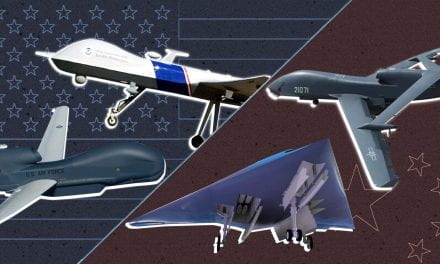Since the invasion of Ukraine in February 2022 by the Russian military, the United States has committed substantial resources to helping Ukraine resist the threat to their existence. Billions of dollars, millions of munitions rounds, thousands of artillery shells, and hundreds of defensive weapons systems and armored vehicles have been given to Ukraine with the goal of preserving their sovereignty, degrading the Russian Armed Forces, and defeating Russia’s challenge to the Rules Based International Order. However, amid Russian gains in the Donbas, and specifically in Bakhmut by the Wagner Group, the war is intensifying. Although to this point the United States and its allies have supplied Ukraine with vital weapons needed to sustain the resistance, they have not given Ukraine the ability to win the war. To defeat Russia on the battlefield Ukraine will need long range rocket systems and modern fighter jets, specifically Army Tactical Missile Systems and F-16s. Both ATACMS and F-16s will provide the Armed Forces of Ukraine with the ability to strike targets from longer ranges in addition to helping secure the Ukrainian skies. Unfortunately, American stagnation and desire to avoid escalation have hampered Ukraine’s ability to succeed on the battlefield. The United States must change its strategic objectives to ensure that Ukraine wins the war, and that starts with stepping up its commitment to Ukraine by sending additional modern military weapons and equipment. If not, even though America is not directly participating in the fighting, this conflict can quickly turn into another war that the United States failed to achieve its strategic interests after expending an exorbitant amount of resources because there is no guarantee that Ukraine, fighting with old equipment, can sustain the resistance long term.
The United States has invested the most resources, from a non-direct party, in the world into the Russo-Ukrainian War and by a wide margin. Since the February 2022 invasion the United States has given Ukraine $32.6 billion dollars for security assistance. This includes 160 155mm Howitzer artillery systems, 10,000+ anti-air Stingers and anti-armor Javelins, 38 HIMARS systems, Patriot Air Defense System, 31 Abrams tanks, 109 Bradley Infantry Fighting Vehicles, HARM missiles and other precision guided rockets, mortar systems, and thousands of rockets, artillery and mortar rounds, in addition to millions of small arms munitions, and a variety of other military weapons and equipment that demonstrates America’s commitment to Ukrainian resistance to Russia. [1] However, resisting Russia is different than defeating Russia, and the United States and Ukraine have different ideas of what winning the war in Ukraine looks like.
Ukraine successfully resisting Russian occupation and maintaining their sovereignty is a key strategic interest for the United States. Chairman of the Joint Chiefs of Staff General Mark Milley and Secretary of Defense Lloyd Austin have repeatedly stated that Russia is attempting to disrupt the Rules Based International Order, which was created after the fall of the Axis powers in World War II to preserve peace and limit wars of aggression. The United States is the leader of the liberal order and is actively doing all it can to maintain Ukraine’s status as a sovereign state. Thus, this is what a win in Ukraine looks like for the United States: The preservation of the Ukrainian state, along with sufficient degradation of the Russian Armed Forces, to deter them from launching offensive wars of aggression against Western allied countries in the future.
A win for the Ukrainians looks different. President Zelensky has stated numerous times that the war started with Crimea and will end with Crimea, hinting at a future climactic battle with the Russian Armed Forces for control of the occupied peninsula. This is a rational goal for the Ukrainian leader to pursue because of how negatively the Russian presence in the Black Sea has affected the Ukrainian state, both militarily and economically. The Russian occupation of Crimea cleared the way for the Russian army to advance and capture parts of Kherson Oblast at the onset of the war, in addition to helping establish Russia’s critical land bridge connecting Western Russia to Ukrainian occupied territory and Crimea. Russian access to Crimea also created another front at the onset of the war that stretched Ukraine’s forces. Economically, the Russian occupation of Crimea threatens Ukrainian trade and global food security. The Russian Armed Forces have repeatedly targeted Ukrainian port cities, as seen with the Battle of Mariupol and frequent strikes against Odessa. Odessa accounts for 65 percent of Ukraine’s pre-war trade, in addition to Black Sea ports as a whole accounting for 90% of the country’s grain trade.[2] Ukrainian grain is an extremely valued commodity worldwide and has already been threatened by Russia before the brokering of a deal between the Russian Navy and Ukraine and its allies. If Ukraine were unable to export its grain, presumably from Russian naval or ground forces preventing it, then millions of people around the world would be affected. For the sake of Ukrainian and global food security, Crimea is vital to Ukraine, and a win for Ukraine includes re-acquiring Crimea and all other occupied territories.
Re-acquiring Crimea from Russia will be an extremely difficult fight and will require advanced Western weaponry in order to advance past Russian lines that have been heavily reinforced since the 2014 annexation. Thus, the disconnection between American interests and Ukrainian interests will come to a head if and when Ukraine decides to invade the peninsula. The Armed Forces of Ukraine will need long range rocket systems and modern fighter jets in order to launch successful combat operations into Russian controlled territory. Specifically, Zelensky has been lobbying the U.S to provide F-16 warplanes in addition to ATACMS, a long range rocket system. F-16 warplanes will help Ukraine resist Russian attempts to establish air superiority in addition to giving Ukraine the ability to more effectively strike enemy targets. ATACMS will also give Ukraine the ability to launch strikes on military targets deep in Crimea.
The disconnect between American and Ukrainian interests in the Russo-Ukrainian War is alarming. In a recent interview with Defense One, General Milley recently stated he does not believe Ukraine needs ATACMS. Milley argues that other systems, such as the Guided Multiple Launch Rocket Systems, or GMLRS, can help Ukraine achieve results on the battlefield, even comparing the difference between GMLRS and ATACMS to a “musket versus a repeating rifle.”[3] This characterization of the capabilities of ATACMS seems to be a deliberate political move by Milley to downplay the effectiveness of ATACMS. According to the U.S. Army GMLRS have a range of up to 70 kilometers, while ATACMS have a range of up to 300 kilometers.[4] It appears the United States does not want to escalate tensions between Russia and the United States by providing Ukraine with a valuable weapon. Ben Hodges, the former commander of U.S Army Europe, has publicly voiced his displeasure with the Biden administration’s decision to withhold ATACMS. Hodges emphasizes that the distance from Odessa, a city comfortably under Ukrainian control, to Sevastopol, the headquarters of the Russian Black Sea Fleet, is around 300 kilometers, putting it in the range of MGM-140 ATACMS missiles.[5] It is pretty safe to say these systems would have a tremendous impact on the war, and Washington’s refusal to send them, whether for political reasons or a “shortage of supply,” is negatively affecting the Ukrainian Armed Forces.
Hodges’ evaluation of the situation directly contradicts Milley’s characterization of ATACMS, and begs the question, why is Milley deliberately downplaying its effectiveness? The United States is clearly concerned about the risk of escalation, which further proves the United States and Ukraine’s version of a “win” is drastically different. In the Gulf War the American and Coalition Armed Forces defeated the Iraqis mainly due to airpower. “Shock and Awe” was the phrase coined by analysts of the war to characterize the initial air campaign against Iraqi targets, which was one of the most successful aerial campaigns in military history. Thus, the United States knows the advantage that air superiority can give a military, which is why the decision not to provide Ukraine with F-16 warplanes is confusing. Providing Ukraine with F-16s would at minimum prevent Russia from fully establishing and maintaining air superiority in the war. In the best case scenario, providing Ukraine with F-16s would allow the Armed Forces of Ukraine to establish full control of their skies, something that Russia has struggled to do. The need for F-16s is further highlighted by the recently leaked American intelligence documents, which indicate that, in the next couple of weeks, Ukraine’s air defense capabilities will be drastically reduced due to low amounts of munitions. If true, and there have been no claims to the contrary, Ukraine will need F-16s in order to protect their skies from Russian aircraft and missile launches.
The United States’ strategic objective in Ukraine seems to be protecting Ukrainian sovereignty and the Rules Based International Order by degrading the Russian Armed Forces and allowing Ukraine to resist Russian attempts at occupation. However, these are not Ukraine’s objectives. For over a year Russia has bullied Ukraine by launching an unprovoked and illegal war and frequently attacking civilian targets. Kyiv is ready to fight back; after withstanding the initial offensive on Kyiv, Ukraine has been receiving Western weaponry and has been able to launch successful counter-offensives in Kharkiv and Kherson. Now, after months of mobilization and training in allied countries, they field a capable military and a counter-offensive appears to be imminent. The United States must stop being afraid of escalating tensions with Russia and provide Ukraine with the weapons it needs to win the war. Furthermore, the United States must change its strategic objectives in Ukraine in order to help the Ukrainian military achieve victory.
The best deterrent for wars of aggression emerges when the defender actually wins the conflict, which Ukraine can only do if they receive ATACMS and F-16s. There is an ethical question to ask as well, regarding whether or not it is right for the United States to frankly handicap Ukraine’s ability to fight by not giving them the weapons they need to win. The current state of American foreign policy in Ukraine is prolonging the war rather than enabling the Ukrainians to win, resulting in tens of thousands of Ukrainian soldiers being KIA. If the United States does not provide long range rocket systems or modern fighter jets, they are just helping to prolong the war, while also running the risk of Ukraine being defeated on the battlefield due to Russia’s ability to mobilize more soldiers, its possession of superior weaponry, and Putin’s determination to win the war, no matter how long it takes and how many soldiers he loses.
[1] “U.S. Security Cooperation with Ukraine,” U.S. Department of State, April 4, 2023, https://www.state.gov/u-s-security-cooperation-with-ukraine/
[2]Daniel F. Runde, Janina Staguhn, and Romina Bandura, “Ten Most Pressing Questions for Ukraine’s Economic Reconstruction,” Center for Strategic and International Studies, June 9, 2022, https://www.csis.org/analysis/10-most-pressing-questions-ukraines-economic-reconstruction
[3]Kevin Baron, “Ukraine Victory Unlikely This Year, Milley Says,” Defense One, March 31, 2023, https://www.defenseone.com/threats/2023/03/ukraine-victory-unlikely-year-milley-says/384681/
[4]“Guided Multiple Launch Rocket System (GMLRS) Dual-Purpose Improved Conventional Munition (DPICM)/Unitary/Alternative Warhead,” US Army Acquisition Support Center, https://asc.army.mil/web/portfolio-item/guided-multiple-launch-rocket-system-gmlrs-dpicmunitaryalternative-warhead/
[5]Baron, “Ukraine Victory Unlikely This Year, Milley Says.”







